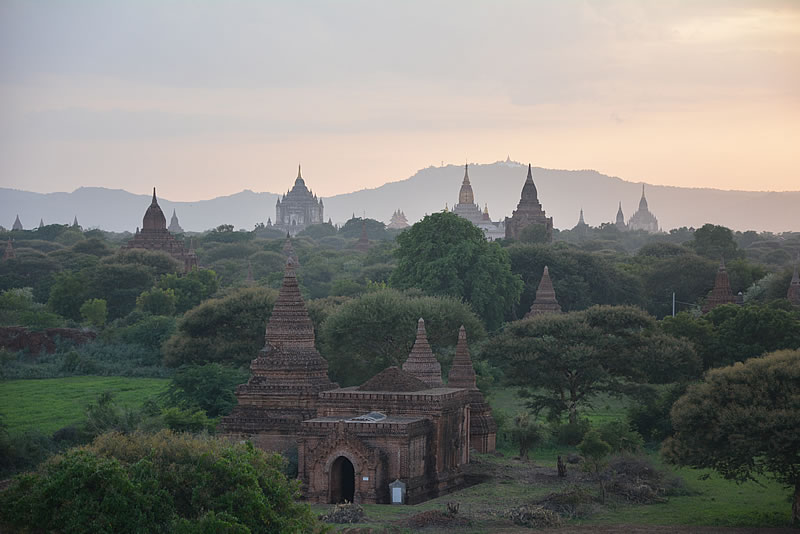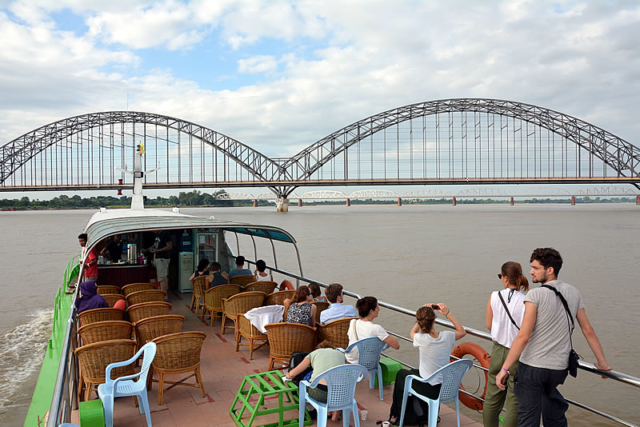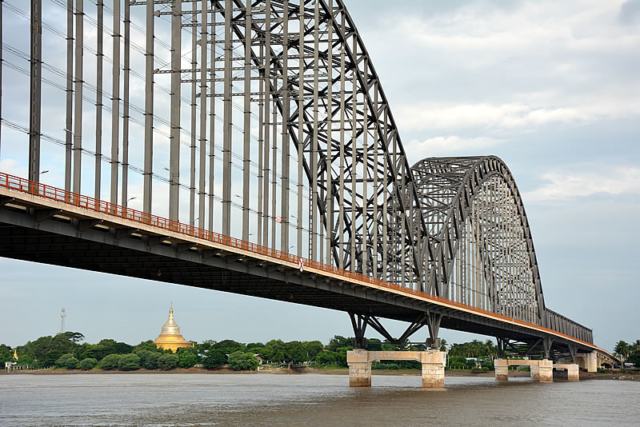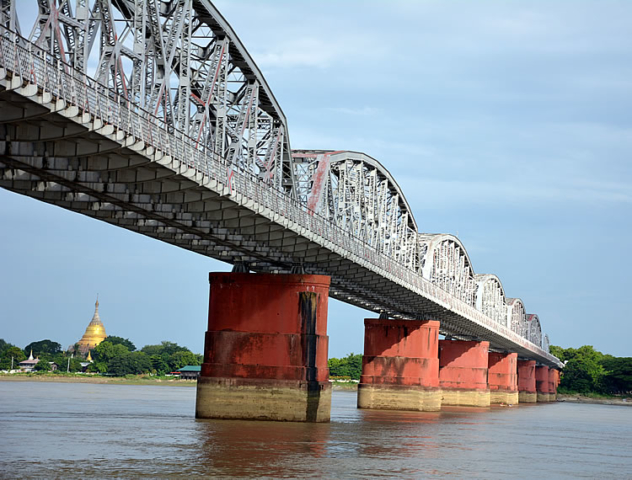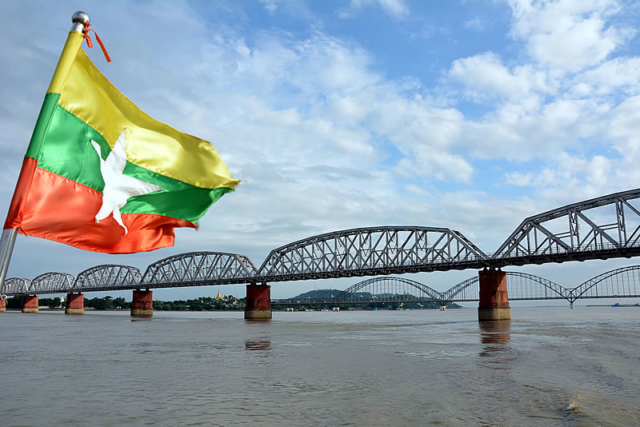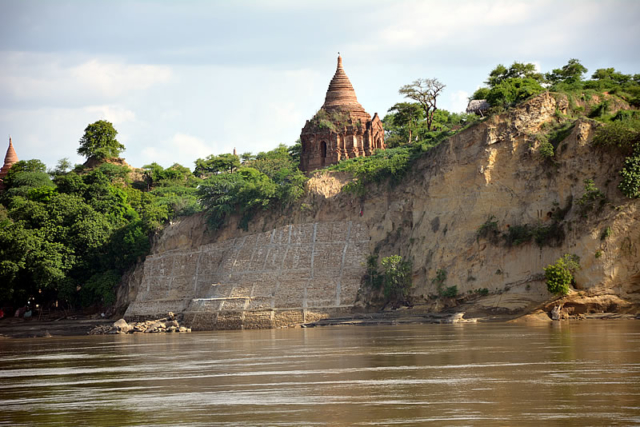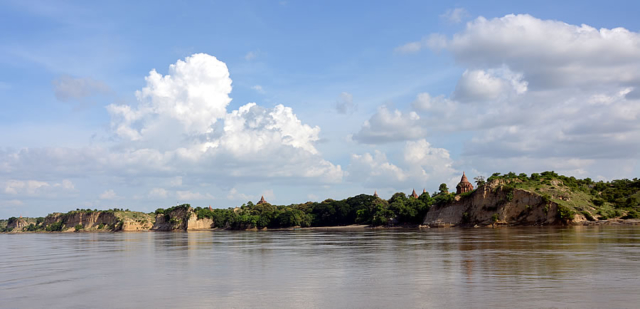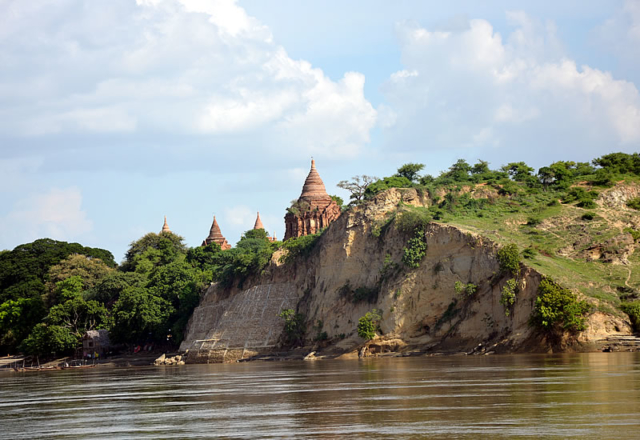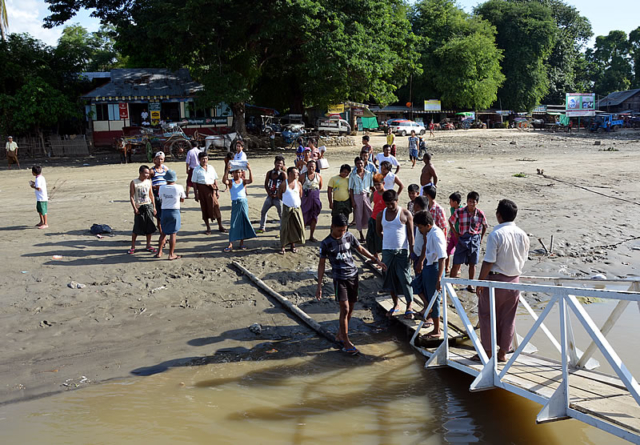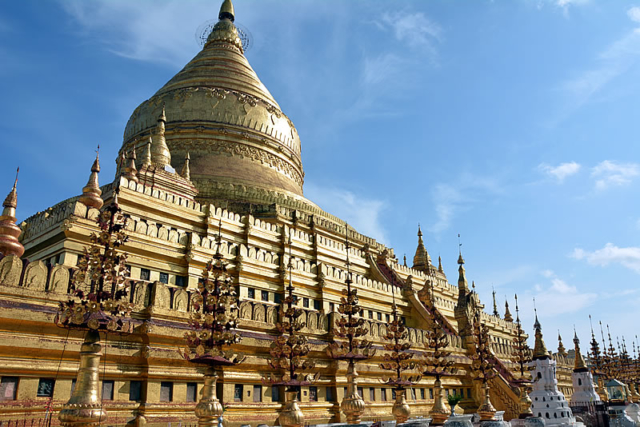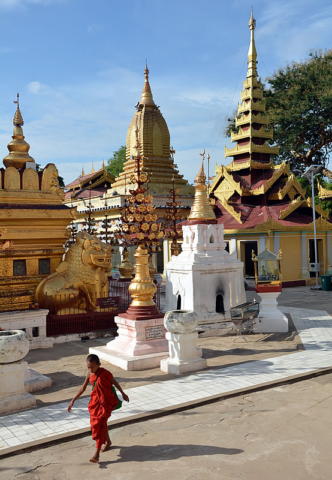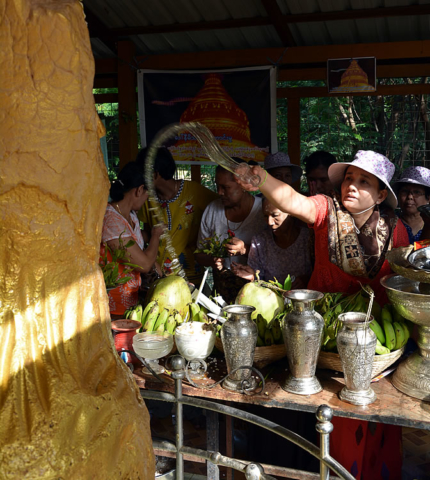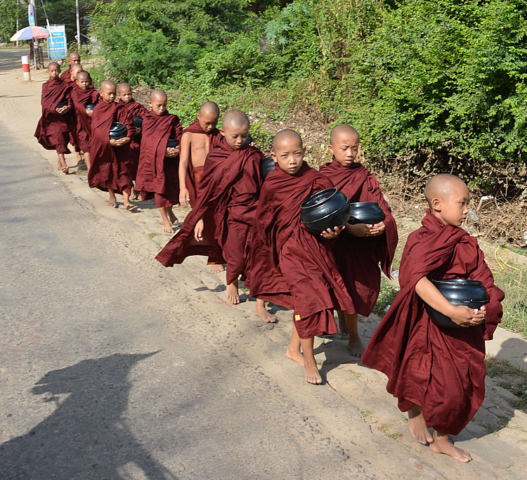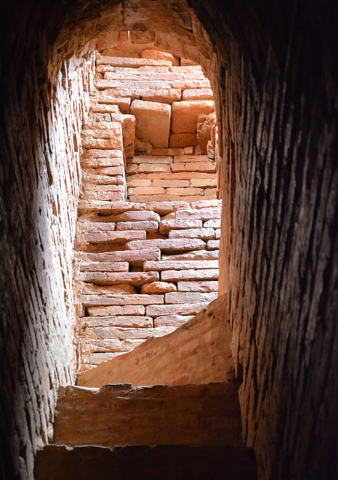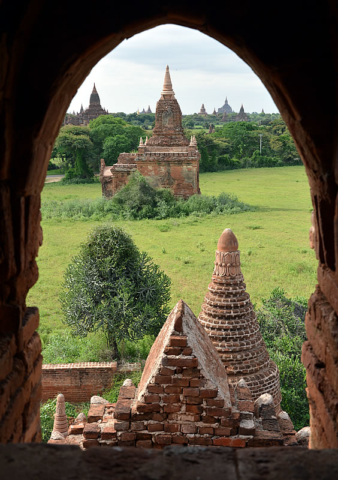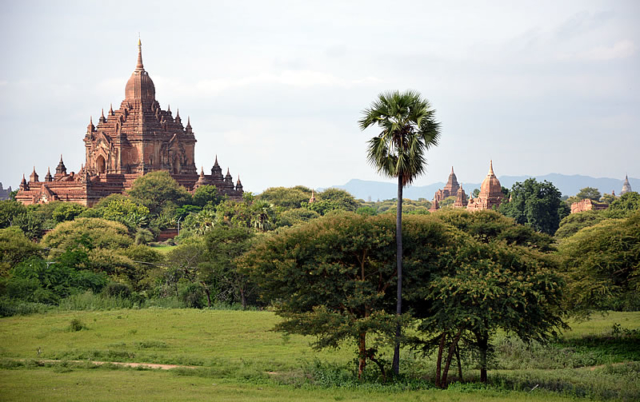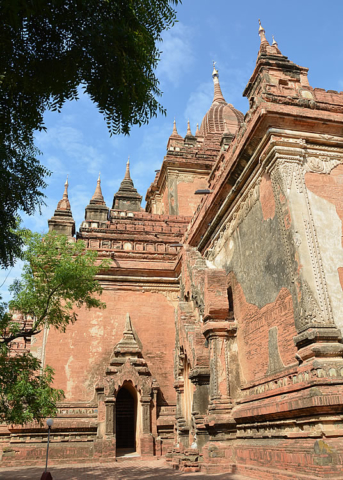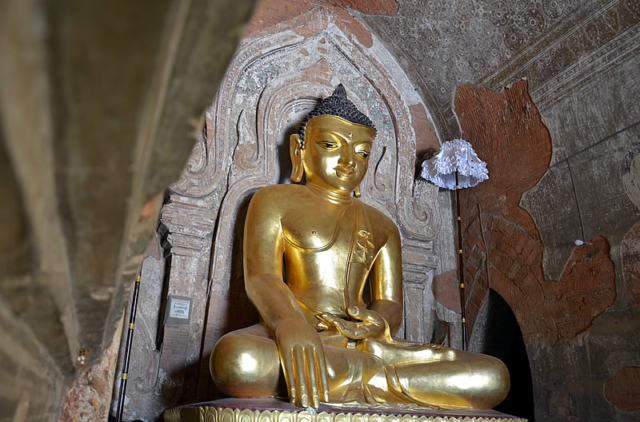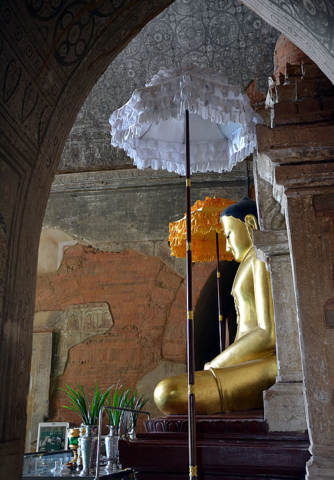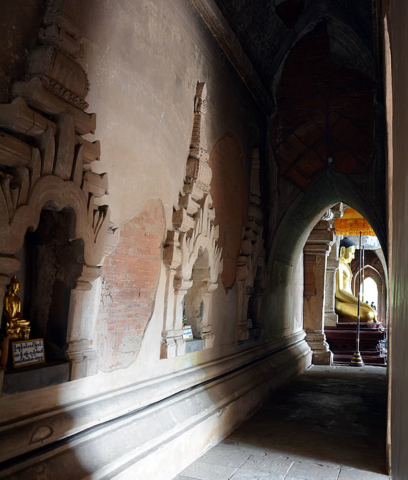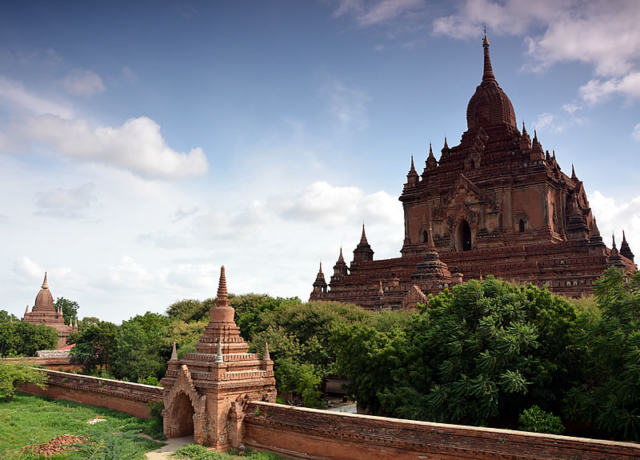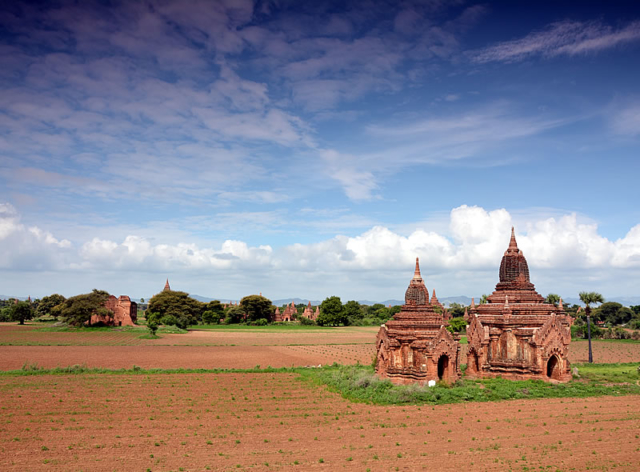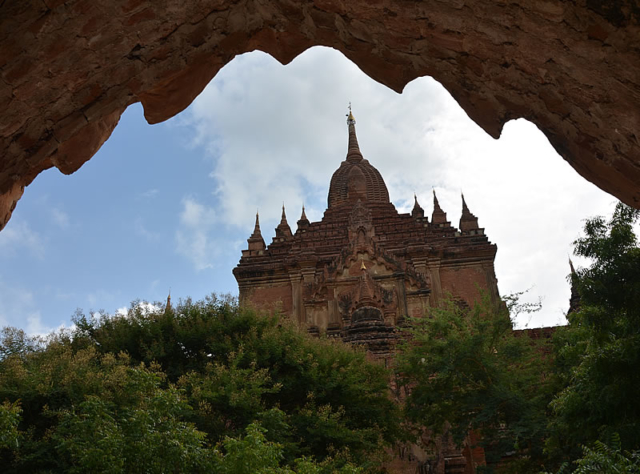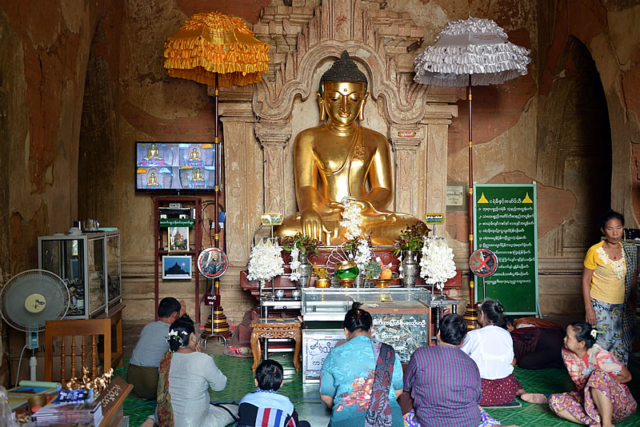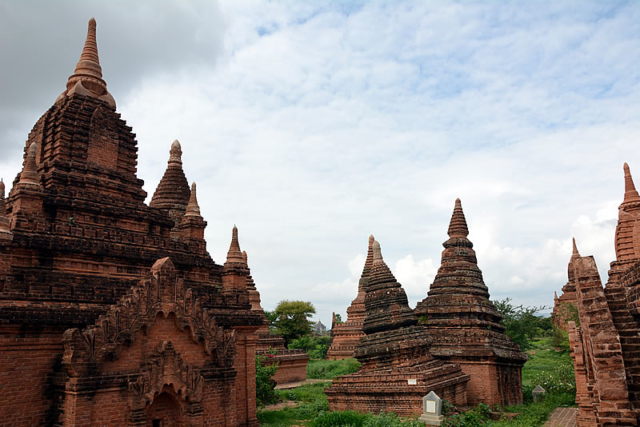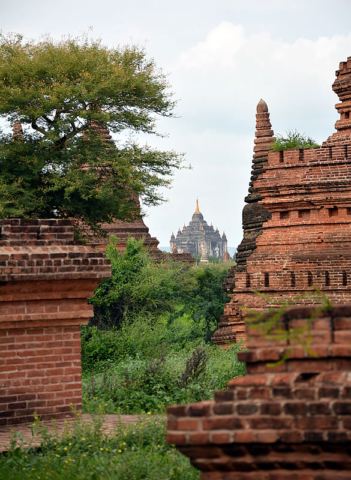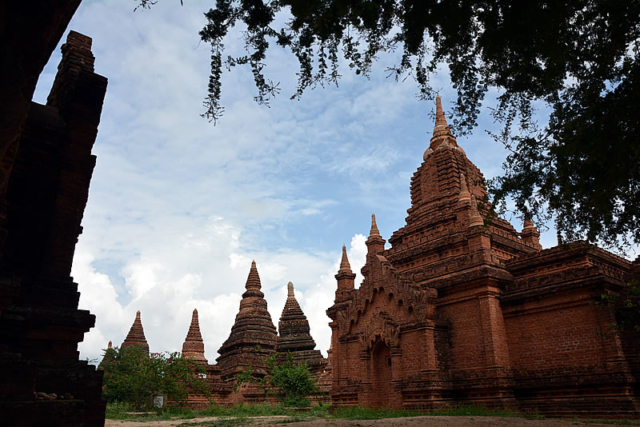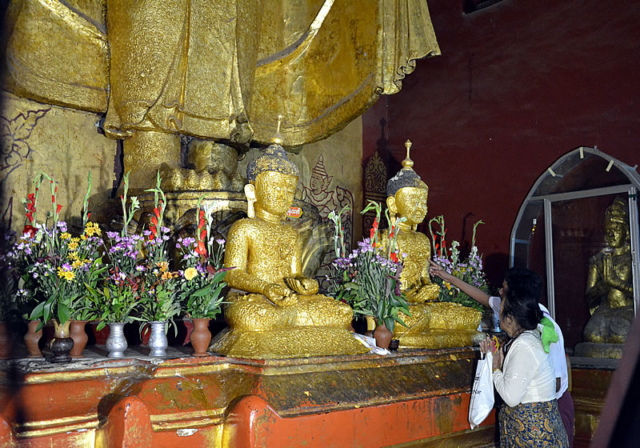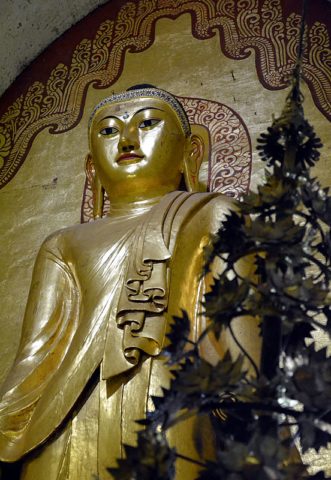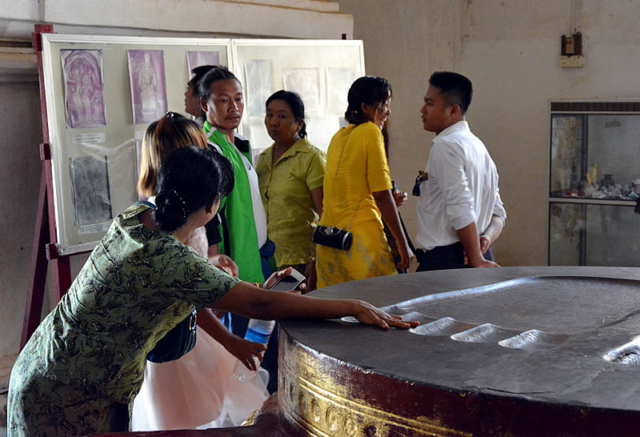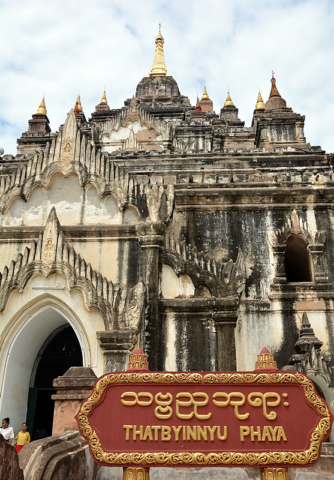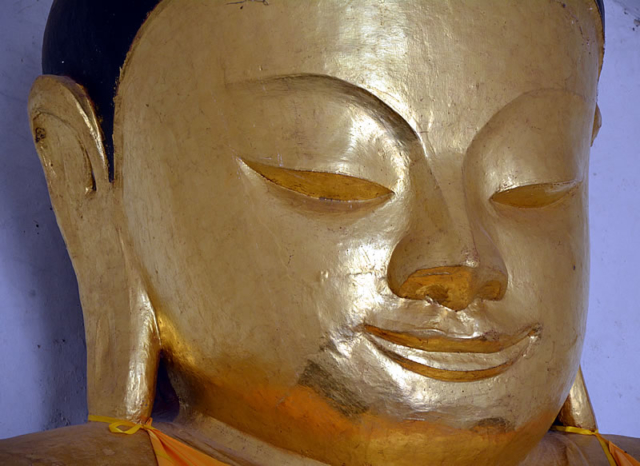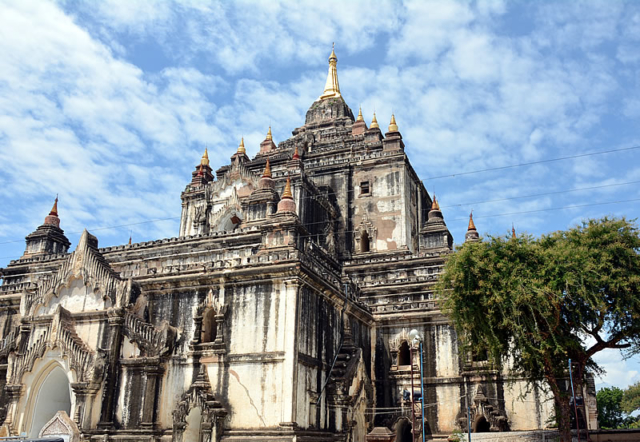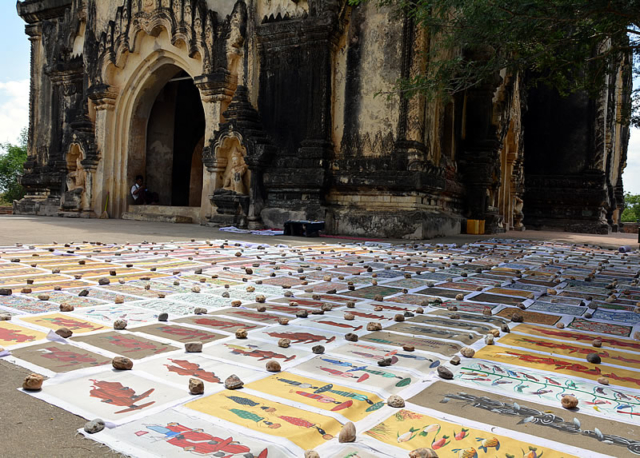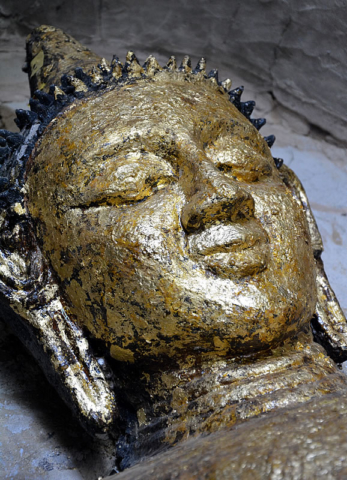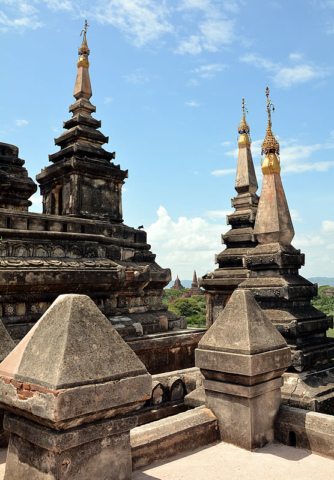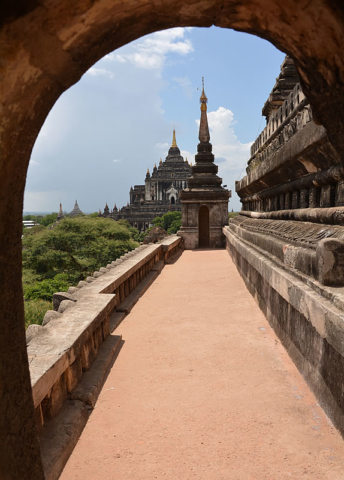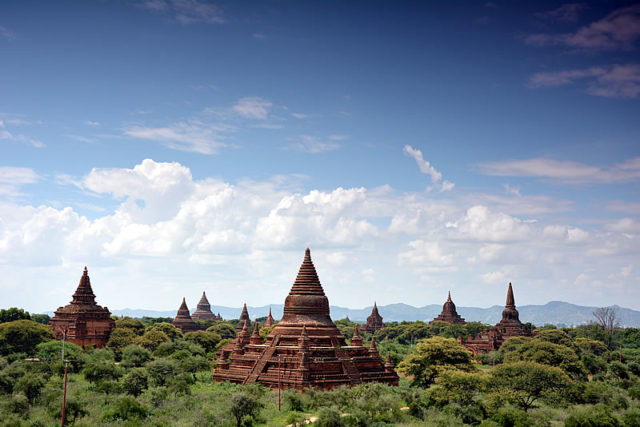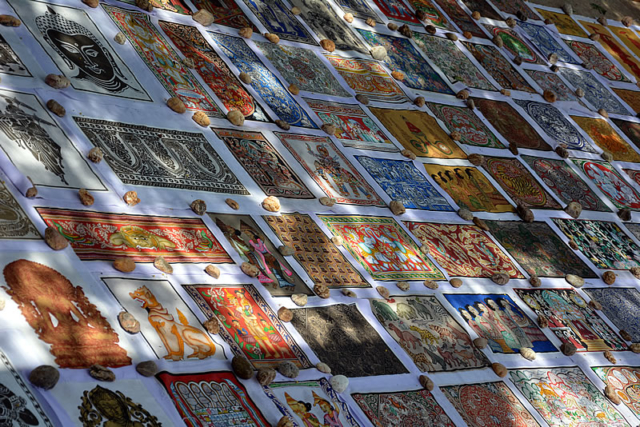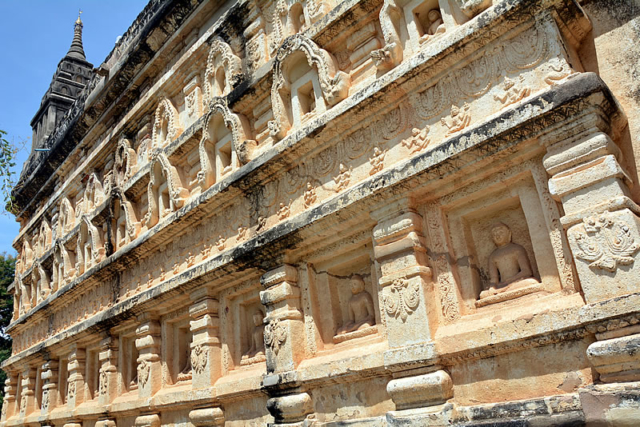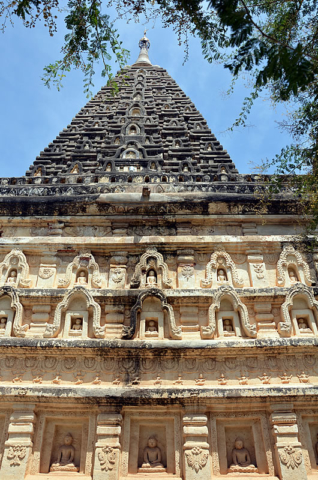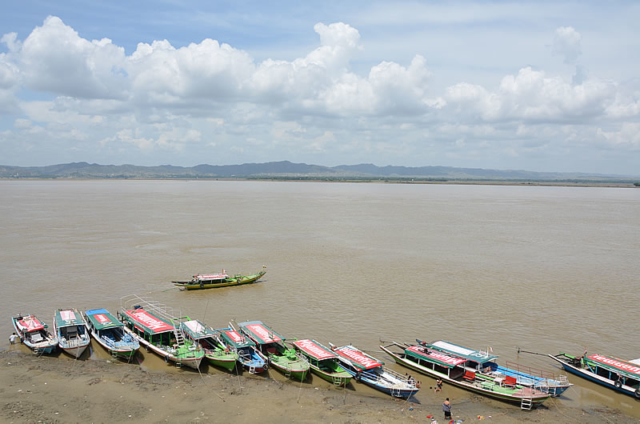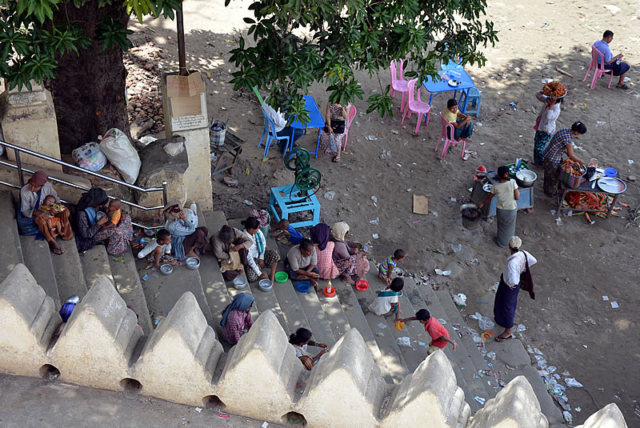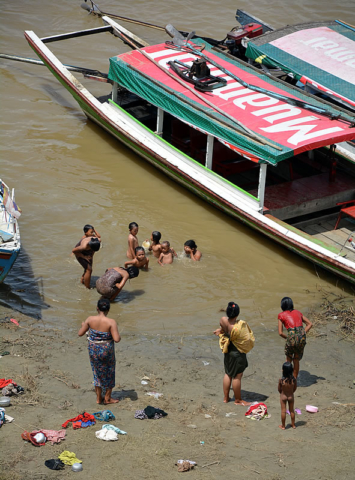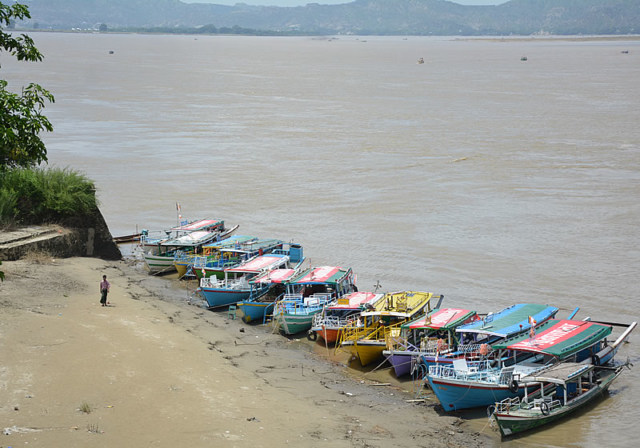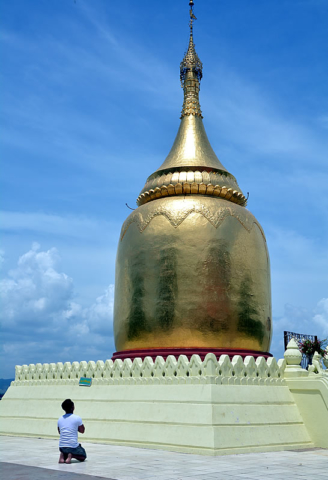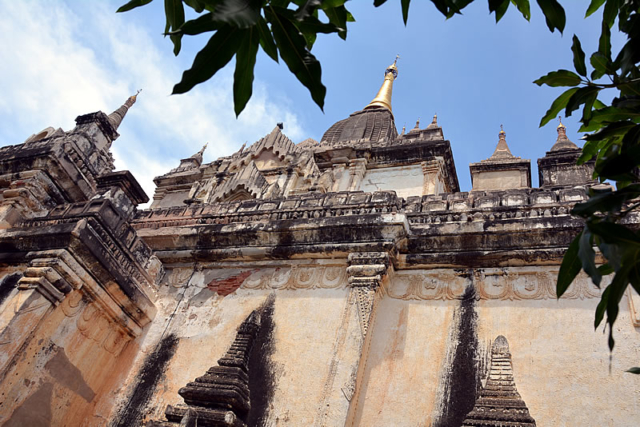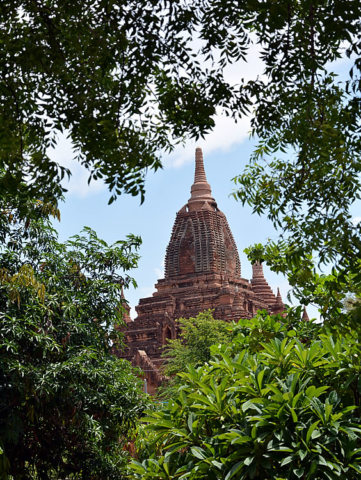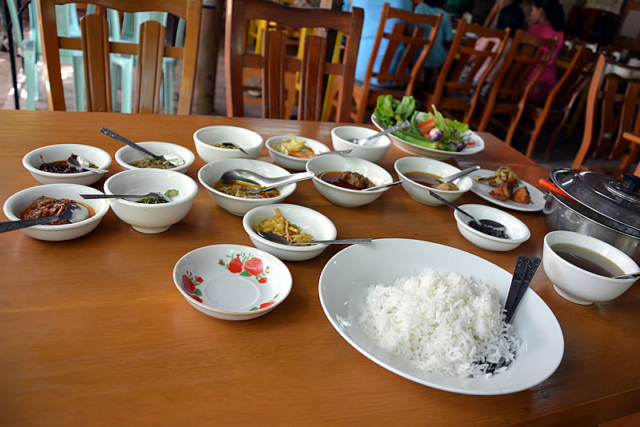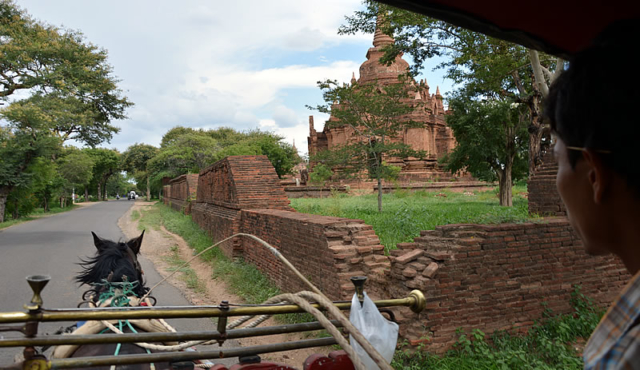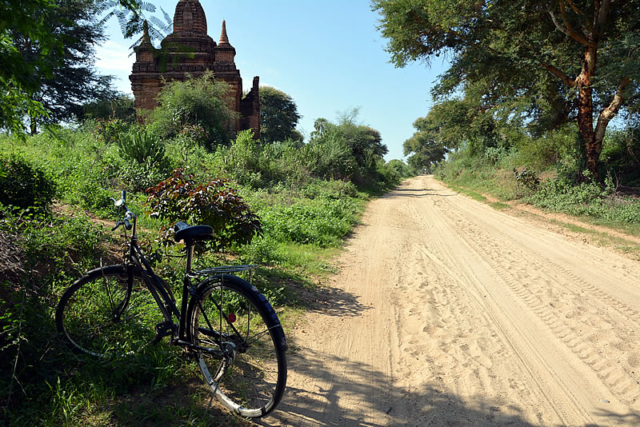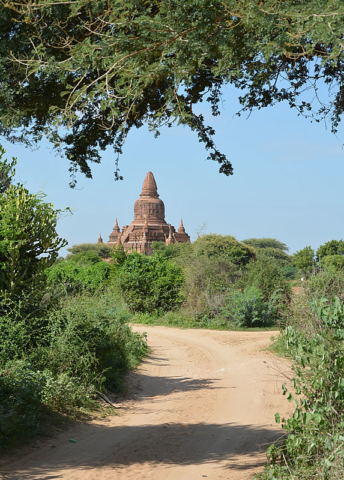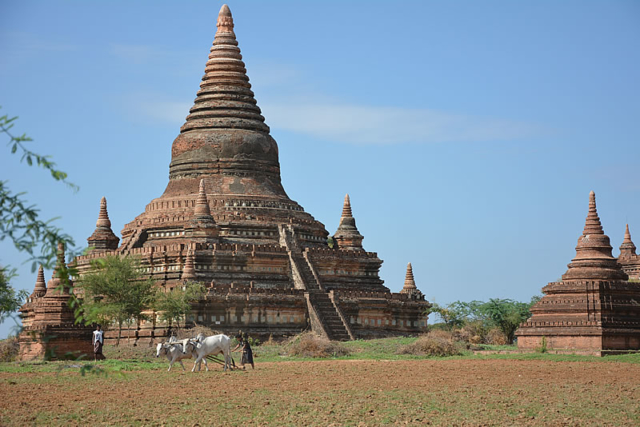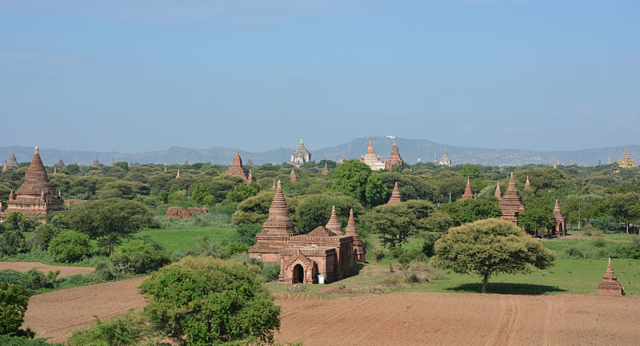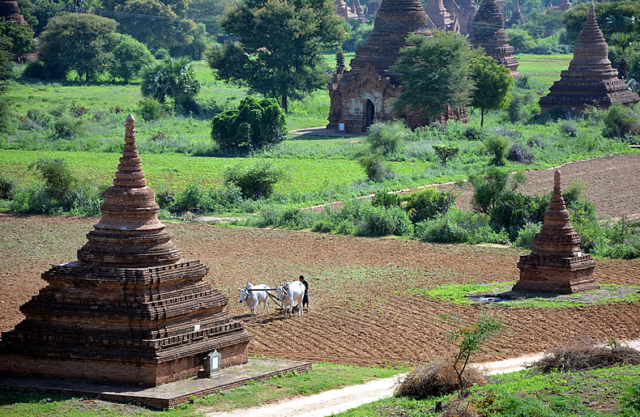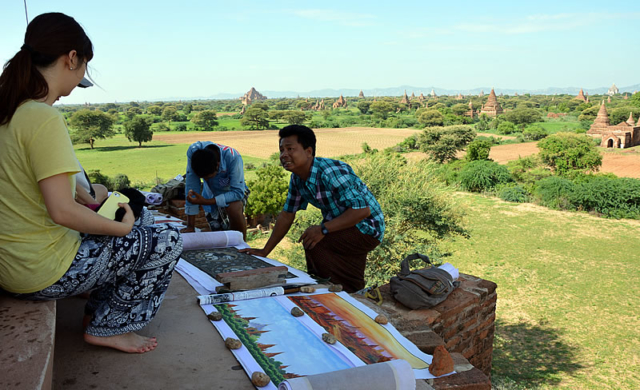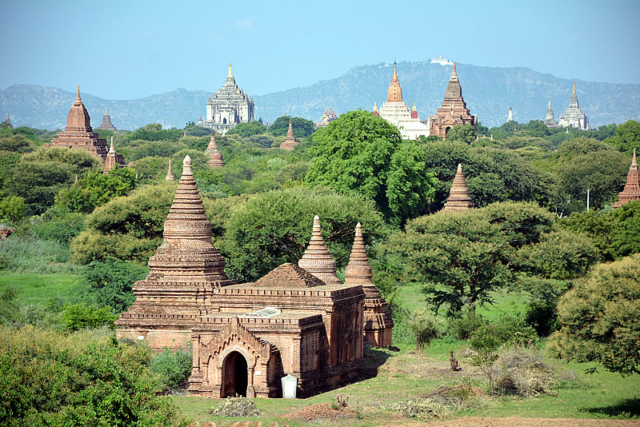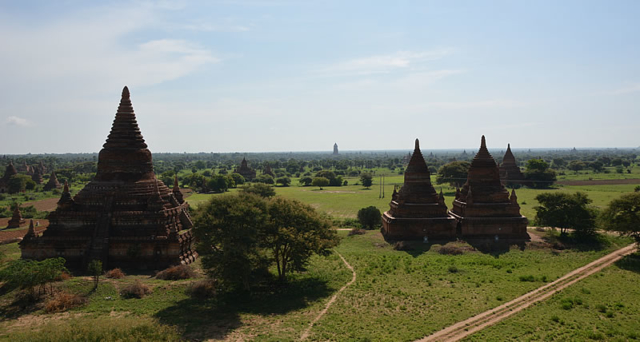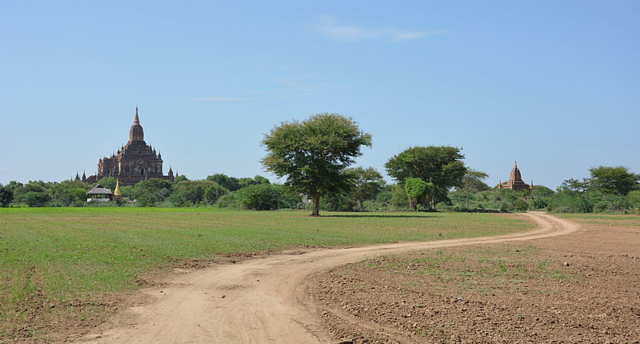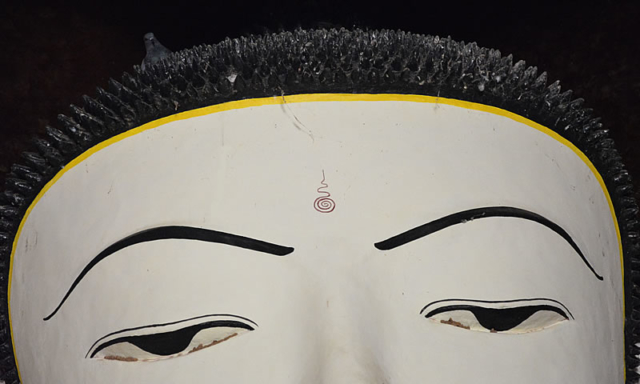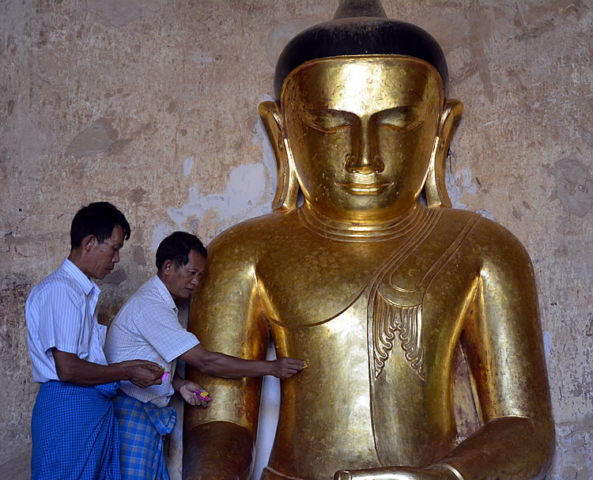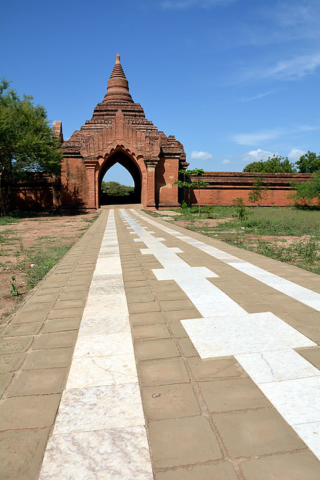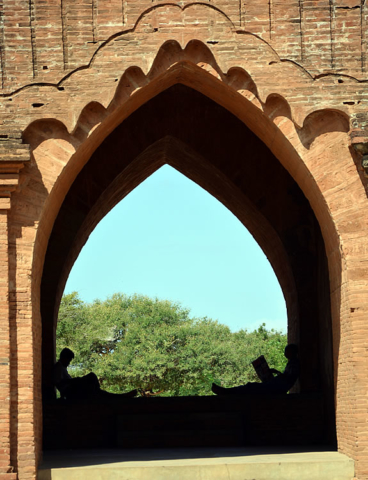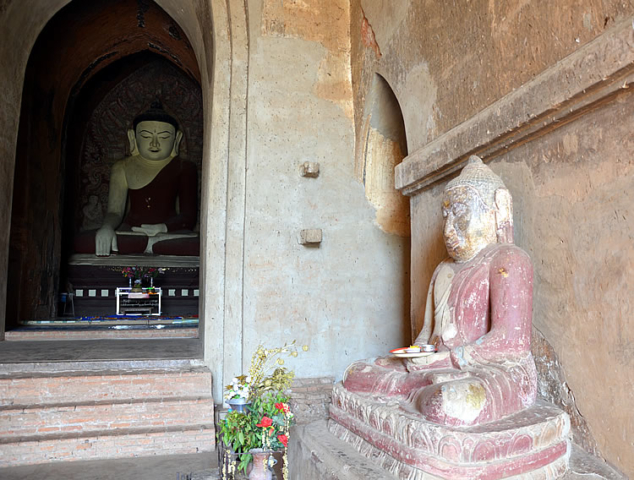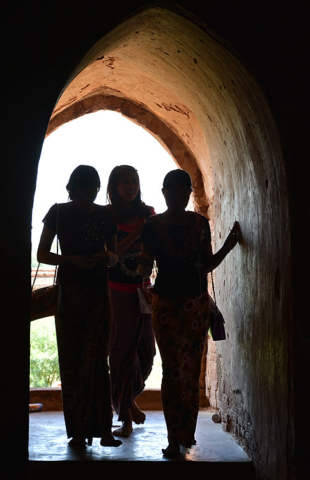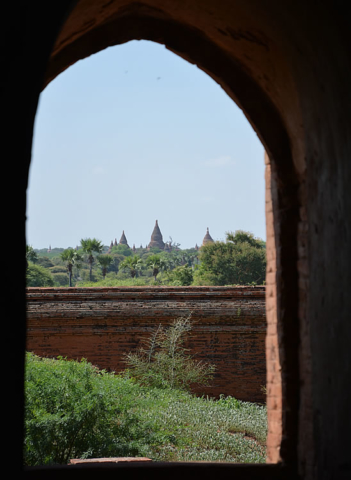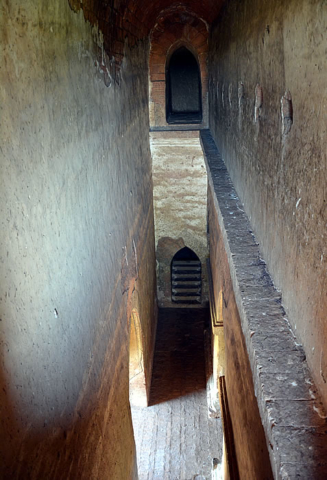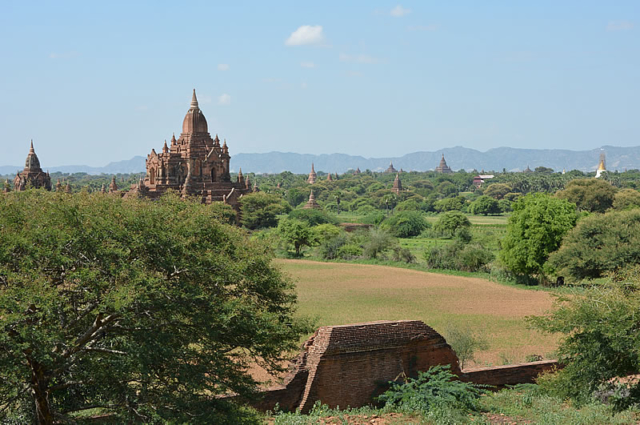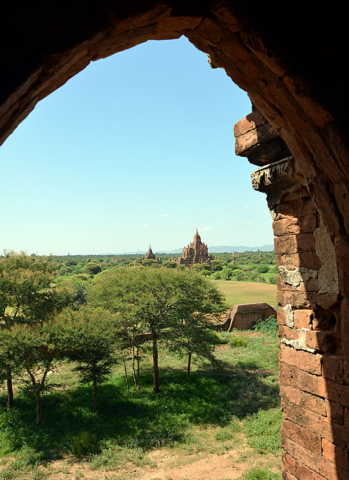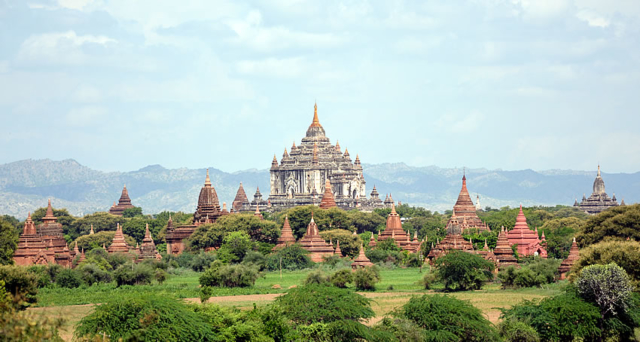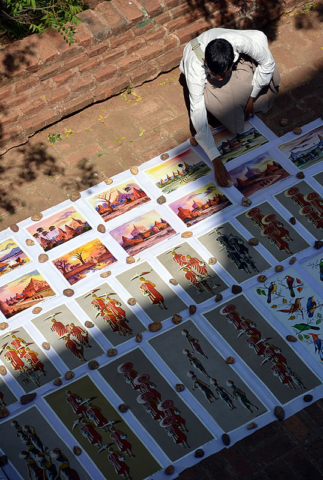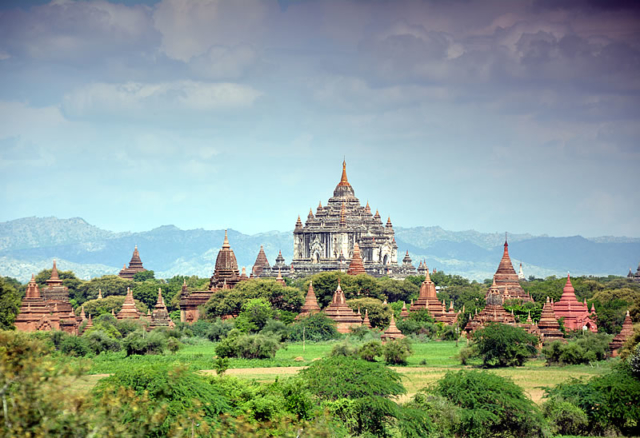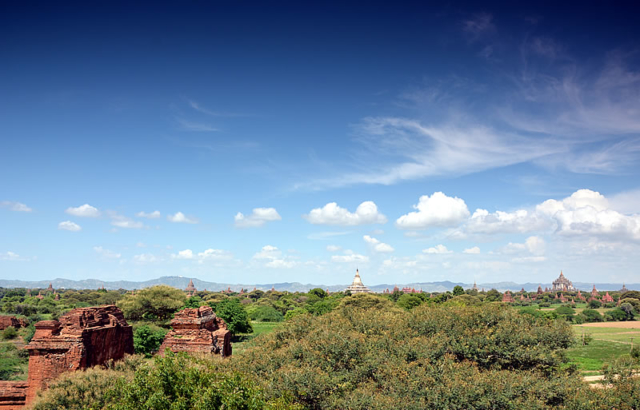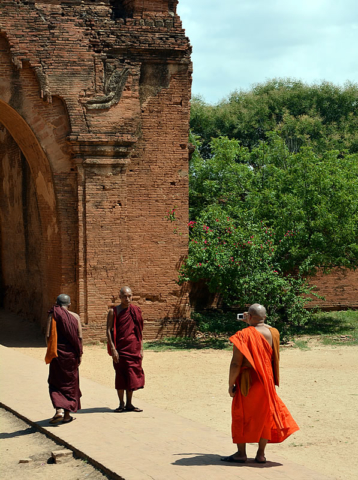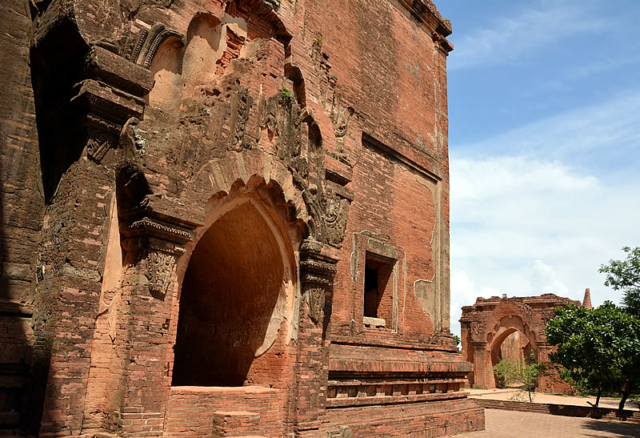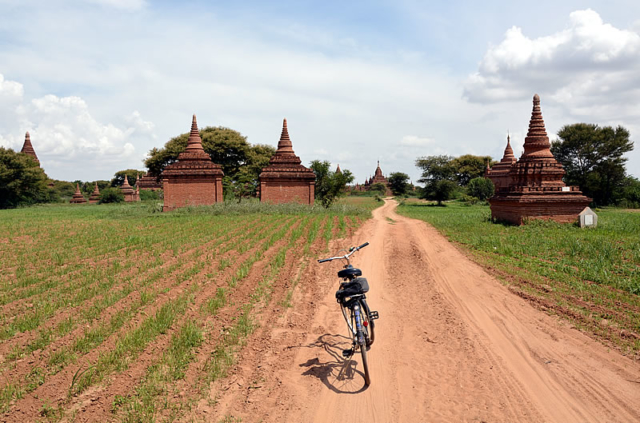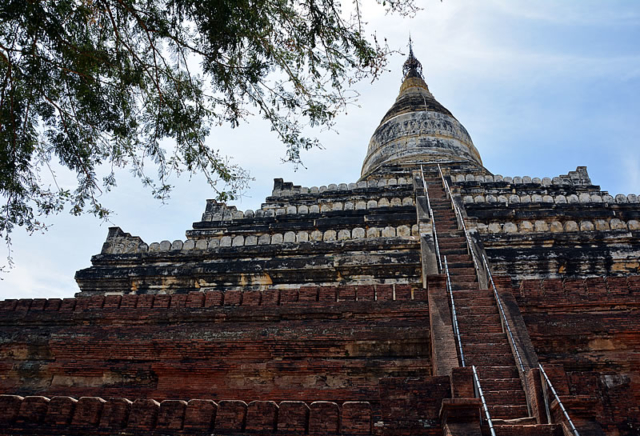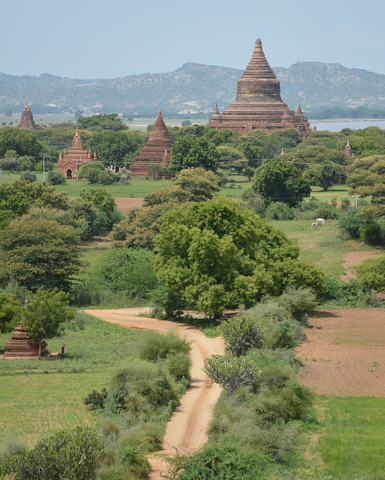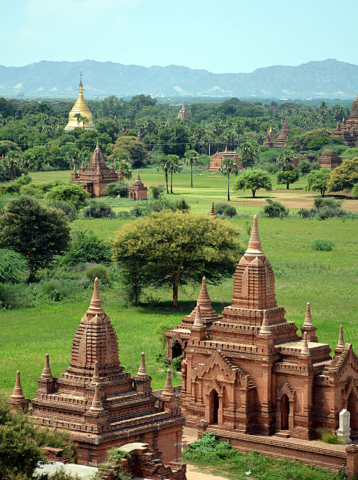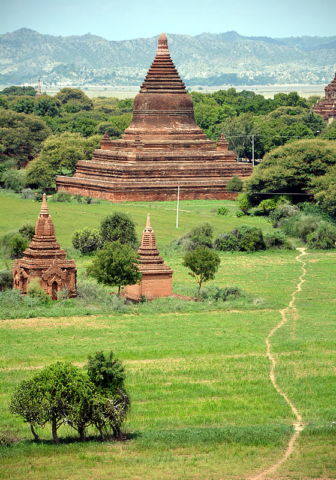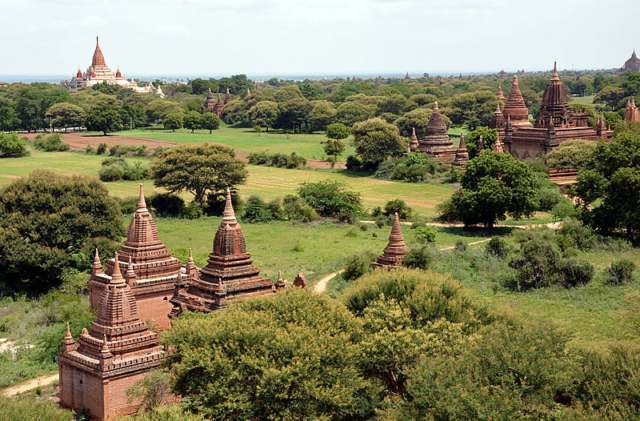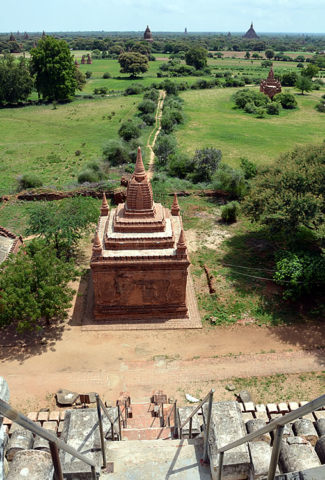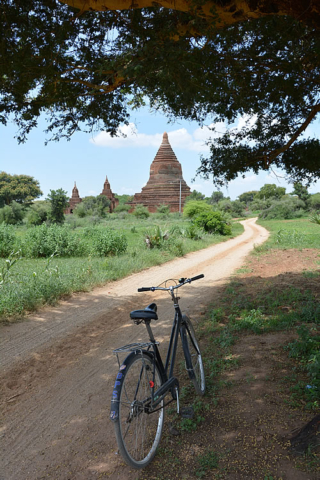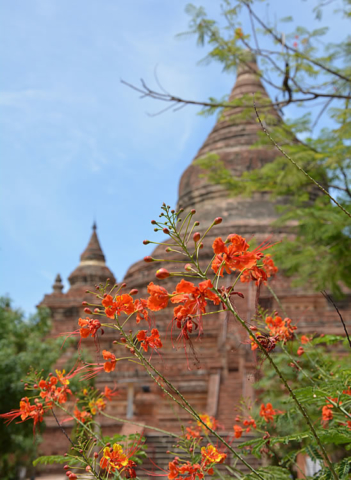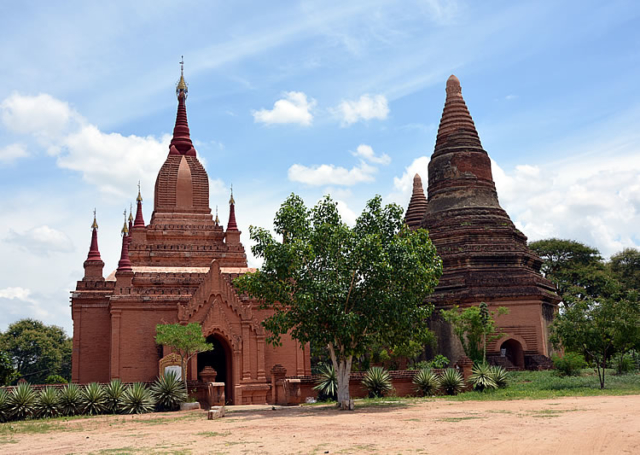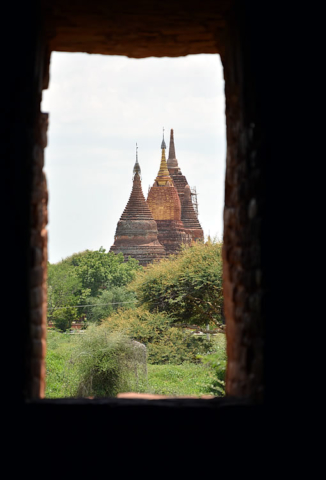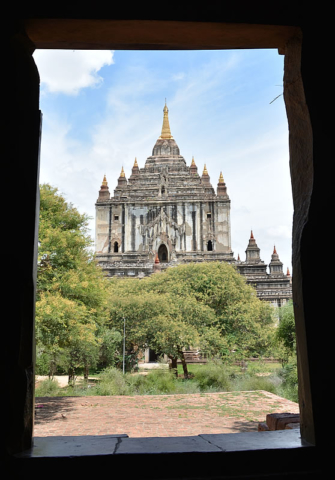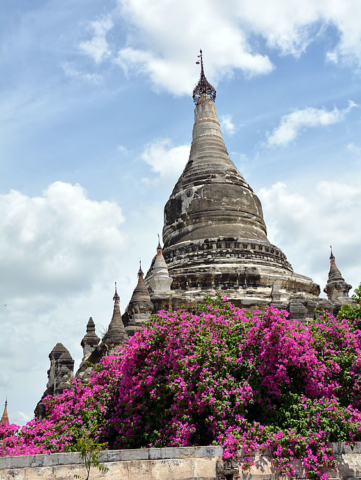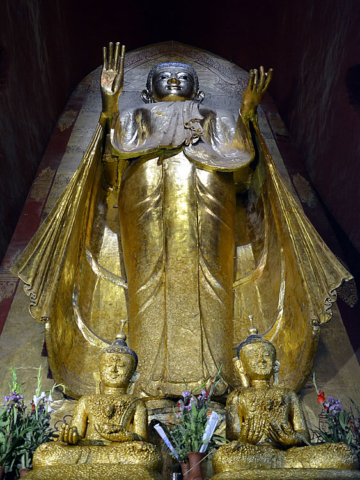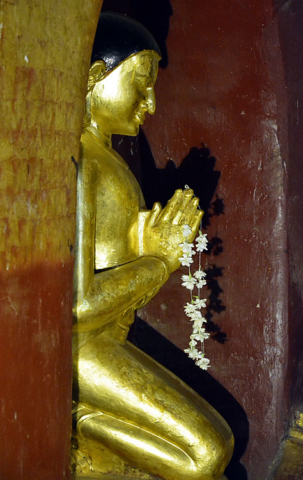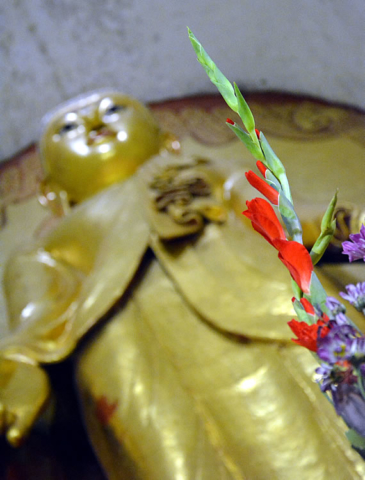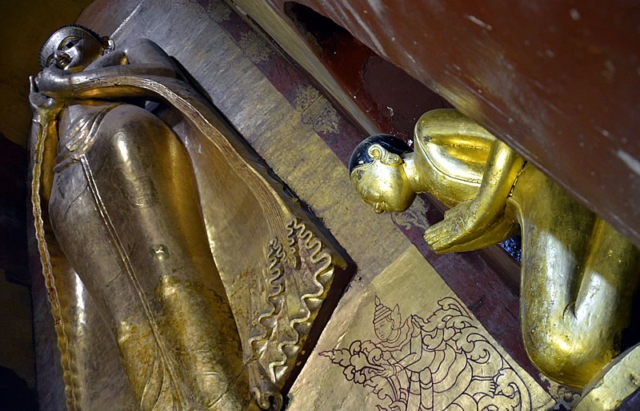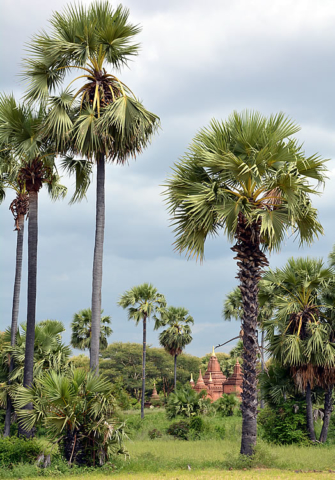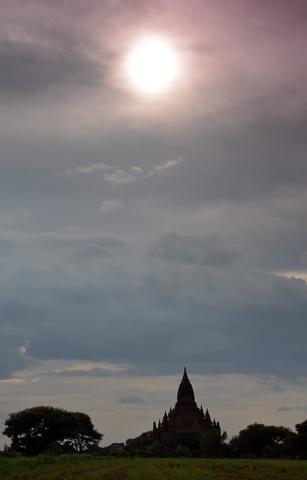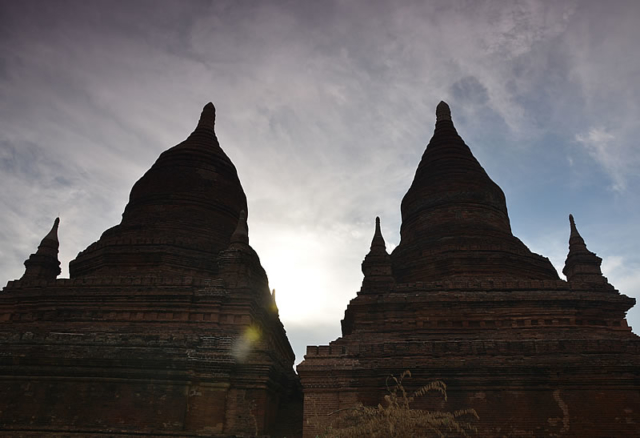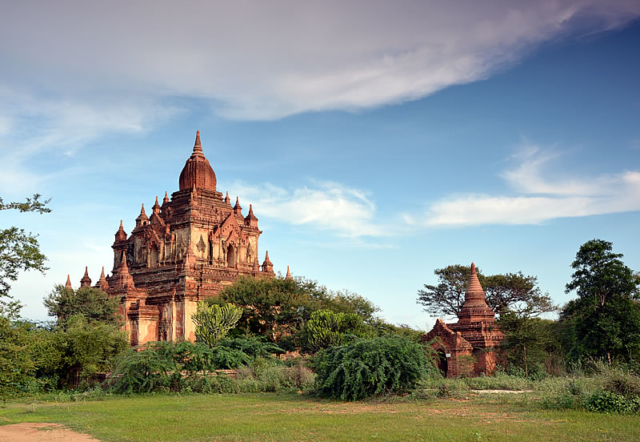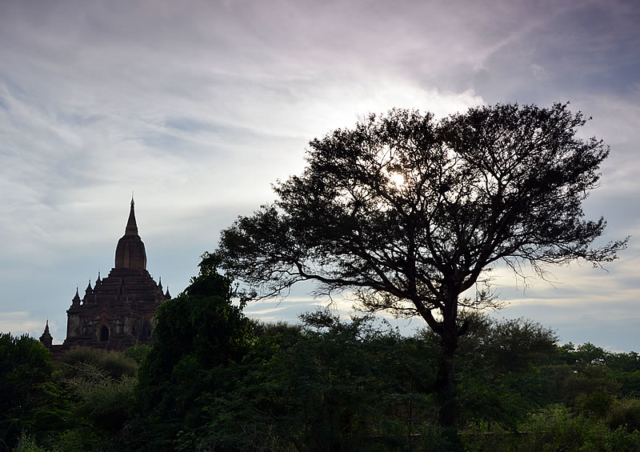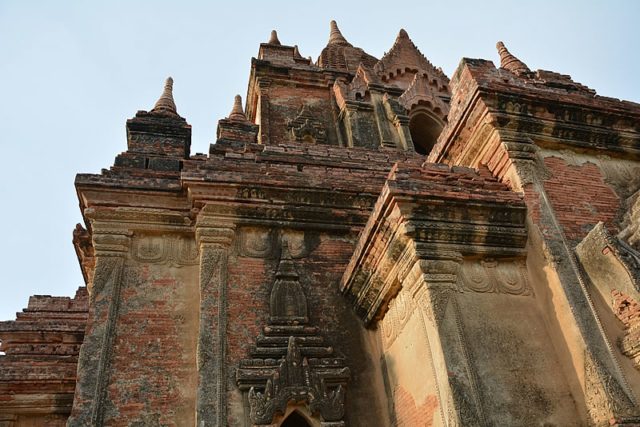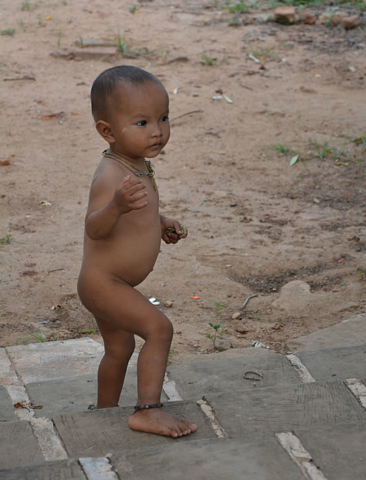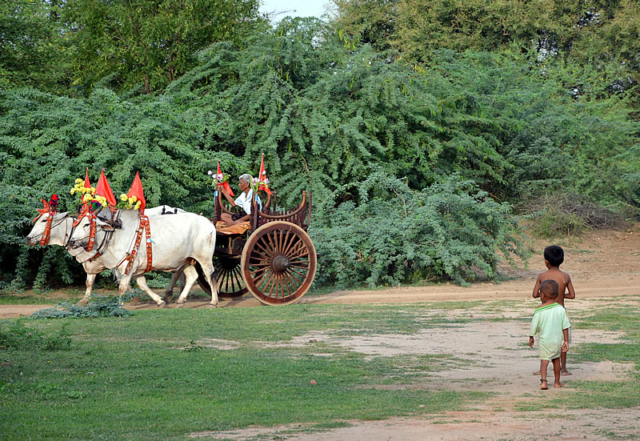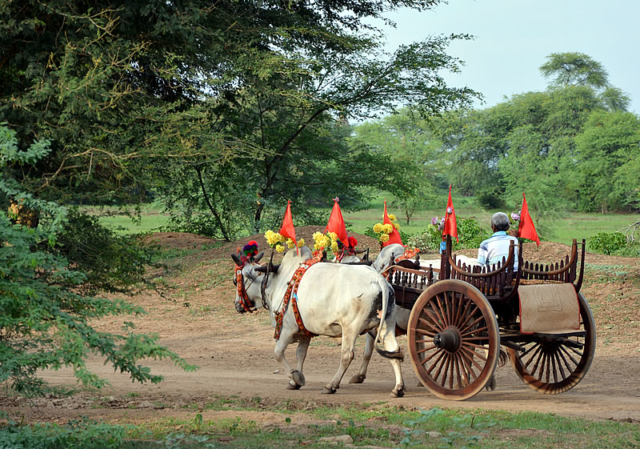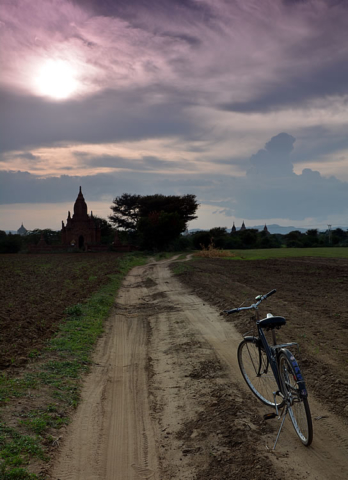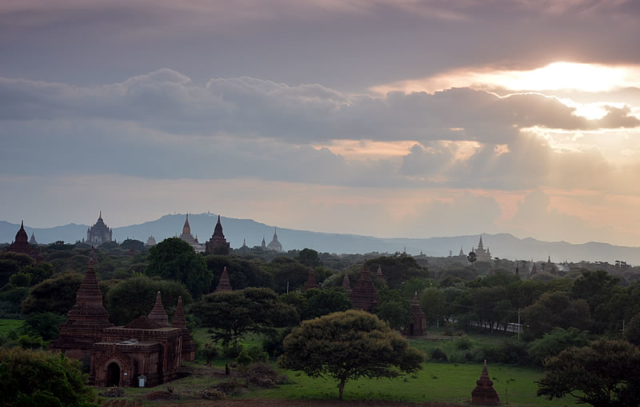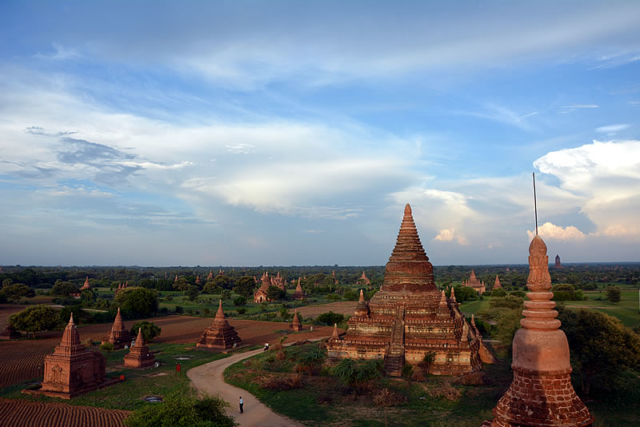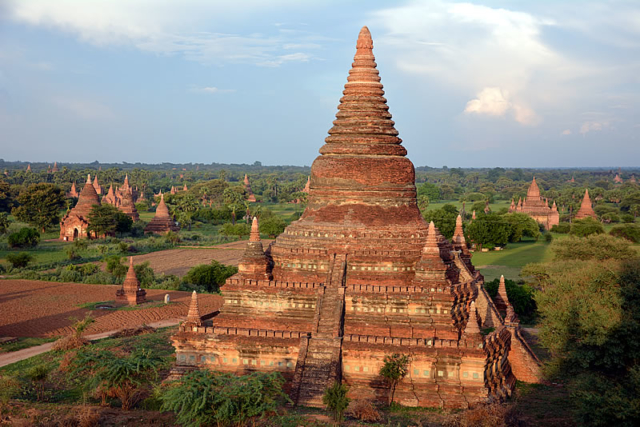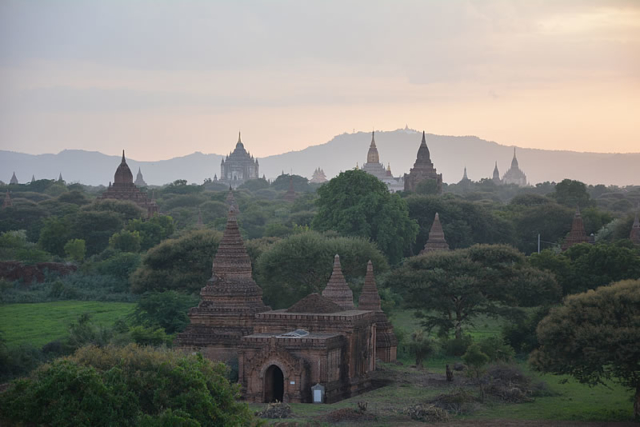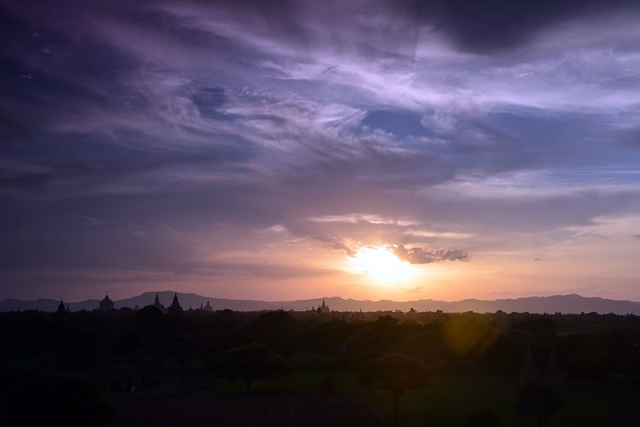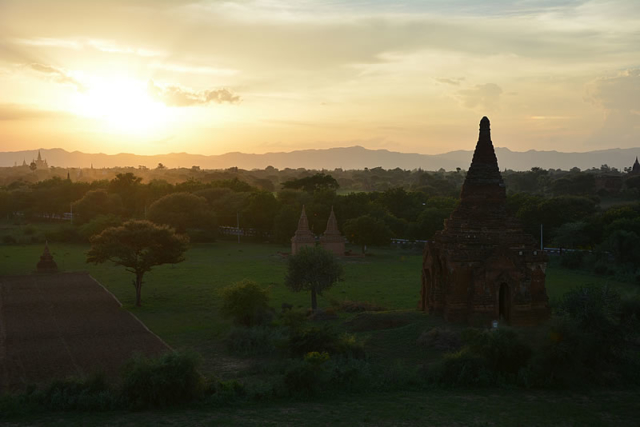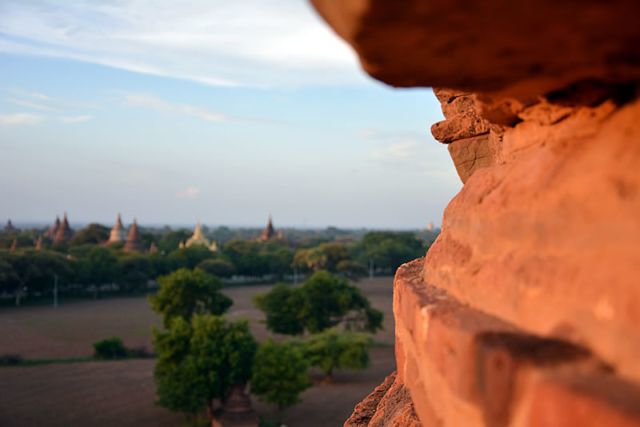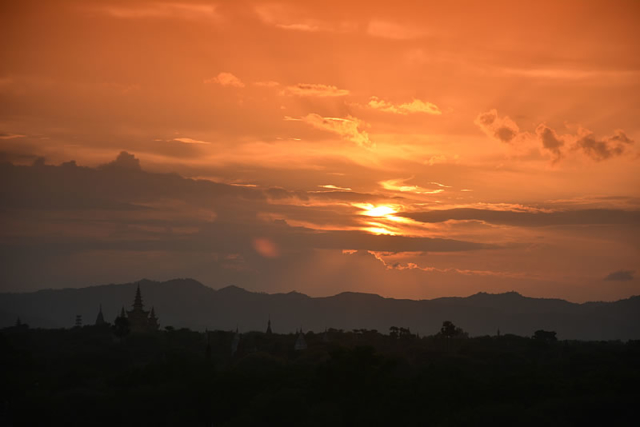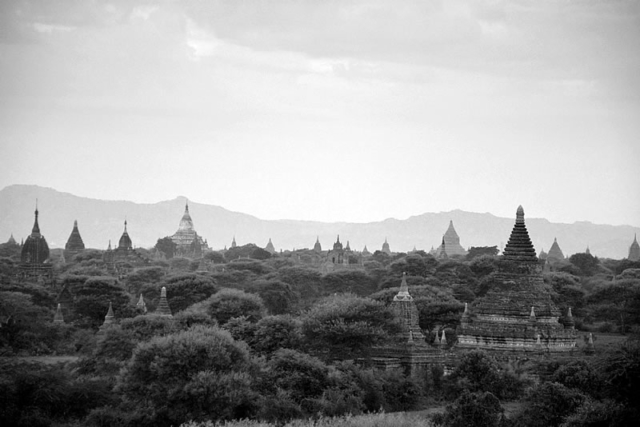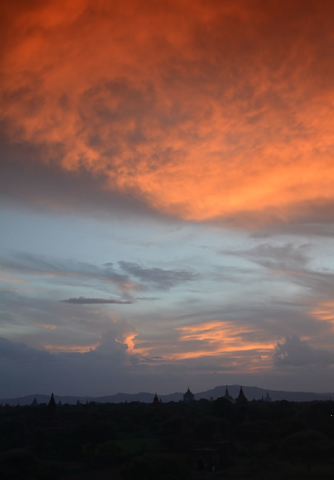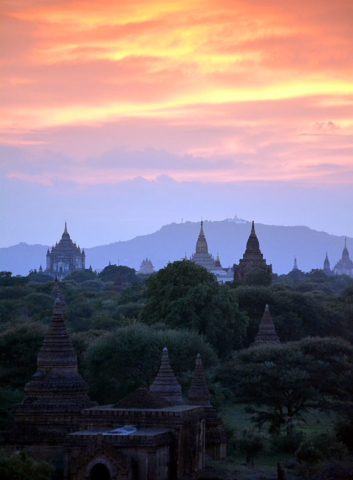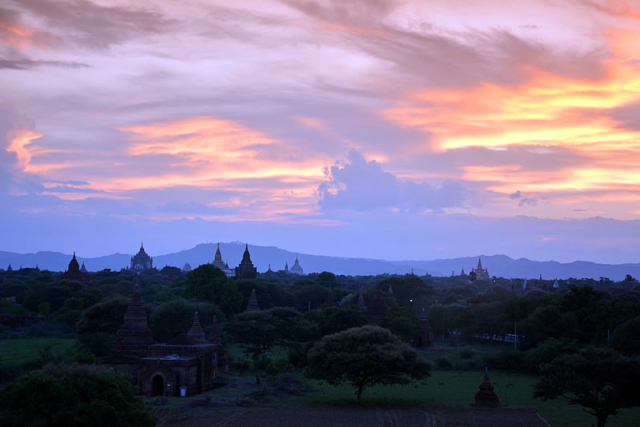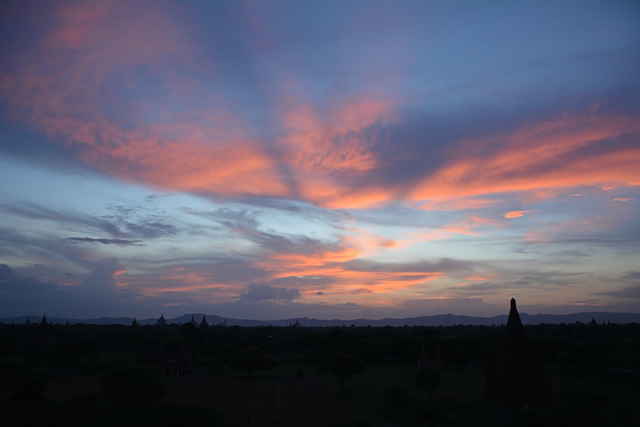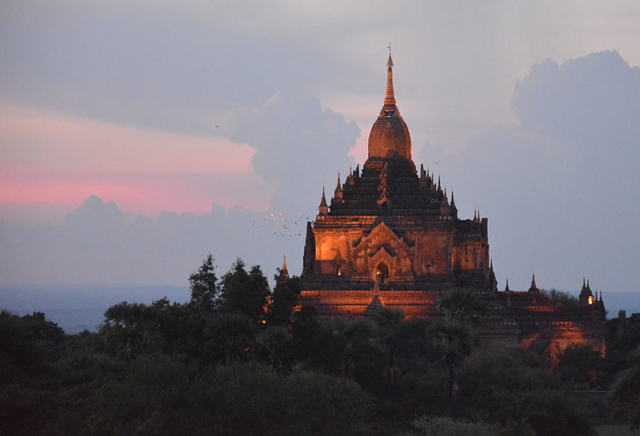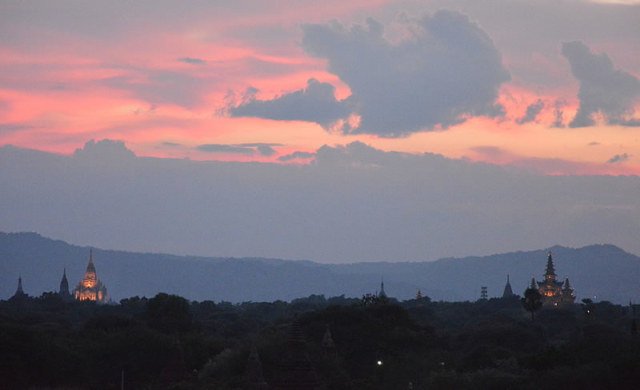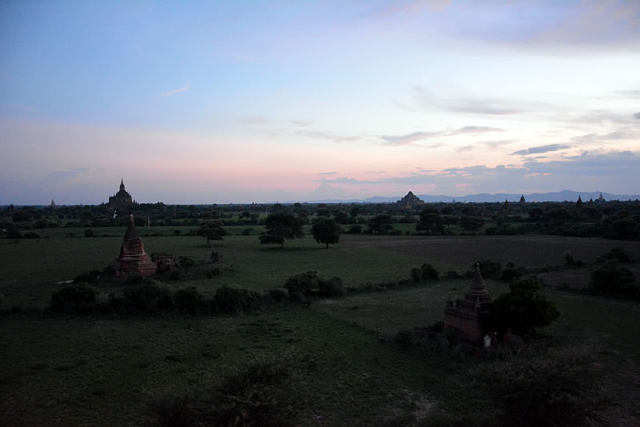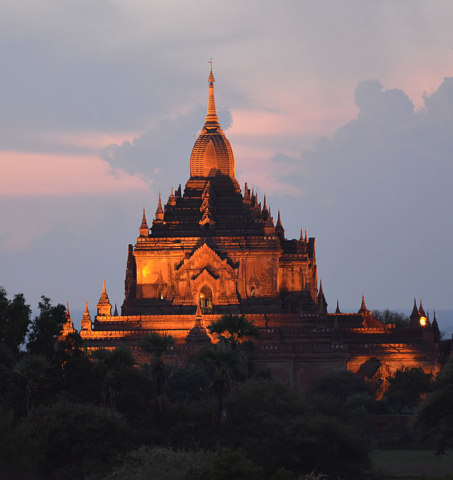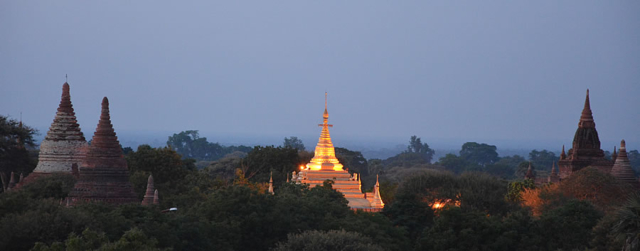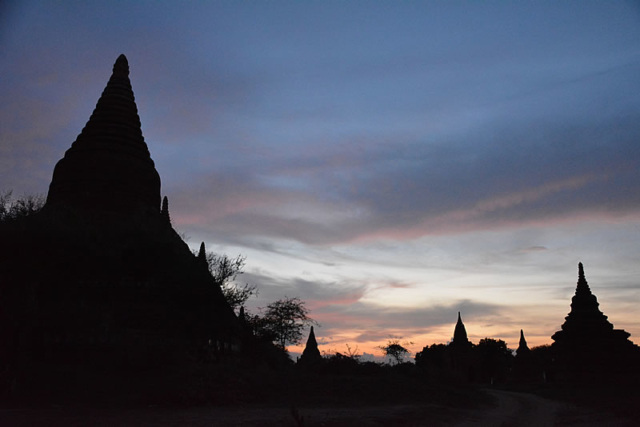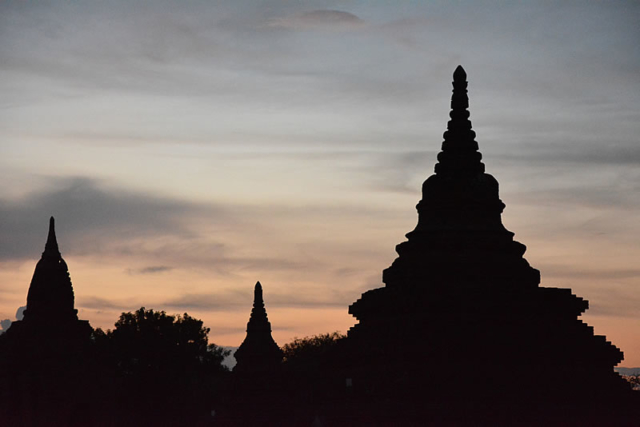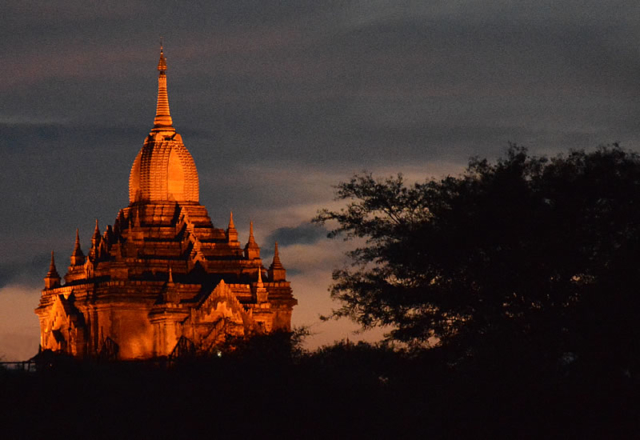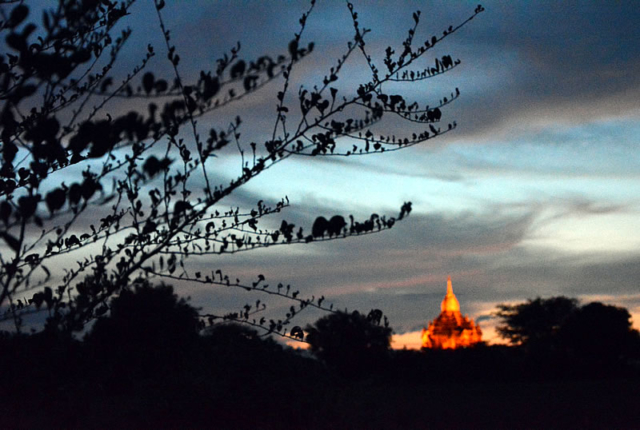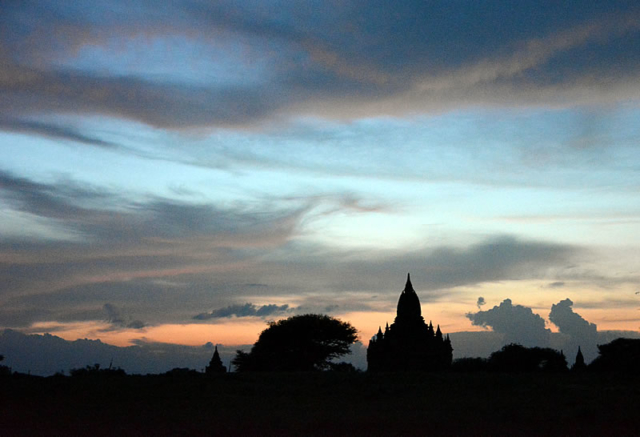It was time to leave Mandalay and the ‘express’ ten hour ferry down river to Bagan pulls out at 7am sharp. One of the pluses of travelling in the off season is that you’re not swamped with bus tourists and Lonely Planet toting backpackers, the boat was at less than 30% capacity, however they were all young couples and Lonely Planet toting backpackers, the journey down the Ayeyarwaddy was pleasant if uneventful.
The jetty, a wooden plank reaching from the boat into the mud, is abuzz with touts and taxi drivers like bees around a jam jar all looking for an inflated fare in low season. I leave the French backpackers to their quibbling over 50 cents and grab a trishaw to the hotel after paying my $15 entrance fee which goes to the government and is vaild for 5 days. Bagan stretches over three villages, Naung U, Old Bagan and New Bagan, each a dusty collection of streets, houses, hotels, and tourist shops.
Opting for a traditional horse cart to get around the sprawling twelfth century ruined city my guide takes me to a number of temples on a set route. There are an estimated 4,000 in total covering the archaeological zone which is an area of 26 square miles so it would be impossible to see them all. Many of the ruins were damaged in an earthquake in 1975 so have been gradually restored by residents and UNESCO. Some are huge monuments housing colossal Buddha images, the locals evidently have their favourites and are out in force making merit and sticking gold leaves onto various Buddha statues.
Fortunately tourist numbers are relatively low at this time of year but as Burma opens up Bagan is bound to be inundated with Chinese tour busses before not too long. The down side of the lull is that the hawkers are relentless; they’ll follow you around offering info on the temple then directing you to their lacquerware stall or whipping out a reel of postcards, or even a copy of Orwell’s Burmese Days for 3 bucks. Some will ask where you’re from then pull out some of your own currency and ask you to change it for kyat, others will try flattery in order to sell a trinket or two, and even the kids are on the hard sales pitch. Women would give you a glass of water to douse a sacred effigy then ask for a 5 dollar donation for the privilege.
Many of the shrines are similar in design, a square construction with large Buddhas on each side, some can be climbed to view the magnificent vista, and others are gated and locked up. A network of sandy tracks links many of the temples and the land between is still being worked and farmed by locals. Many of them live at various smaller temples in makeshift bivouacs with kids in tow in the hope that they can grab a buck or two from visitors that stray from the well beaten paths.
The next day I take a bicycle and head deeper into the plain which is so vast that you may not see another person for several hours. This leads to some exciting discovery missions where you can find yourself alone in a thousand year old temple complex with nothing but the ever watchful Buddha gazing down in quiet contemplation and the resident bats to keep you company. The heat becomes oppressive as midday approaches so it makes sense to stop pedaling and seek out a local eatery to shelter from the searing sun.
The temples are best experienced at dusk where the golden light of the dropping sun affects the hues of the ancient structures and offers up some fantastic photo opportunities, especially from the top of a pagoda. There are a number of sunset spots offering breathtaking views which can and do get very busy in high season. Cycling back down dusty lanes through fields dotted with stupas and ruins as dying light of the day dwindles, eerie shadows and silhouettes are cast like the tendrils of history itself – it is as surreal as things get in Myanmar.
I’m going to miss this place, the timeless ephemeral aura that surrounds it, the way that the light changes the colours of the ruins depending on time of day, and the spiritual calm you can get when stumbling into an empty temple and finding a bit of solitude. The hotel has also been one of the best I’ve stayed in, outstanding describes The Bagan Princess, I will miss its overwhelming hospitality, the ever smiling princess at reception, and the in room Jacuzzi, a welcome end to a day – jet blasting the dust of the Bagan plains from weary limbs.

